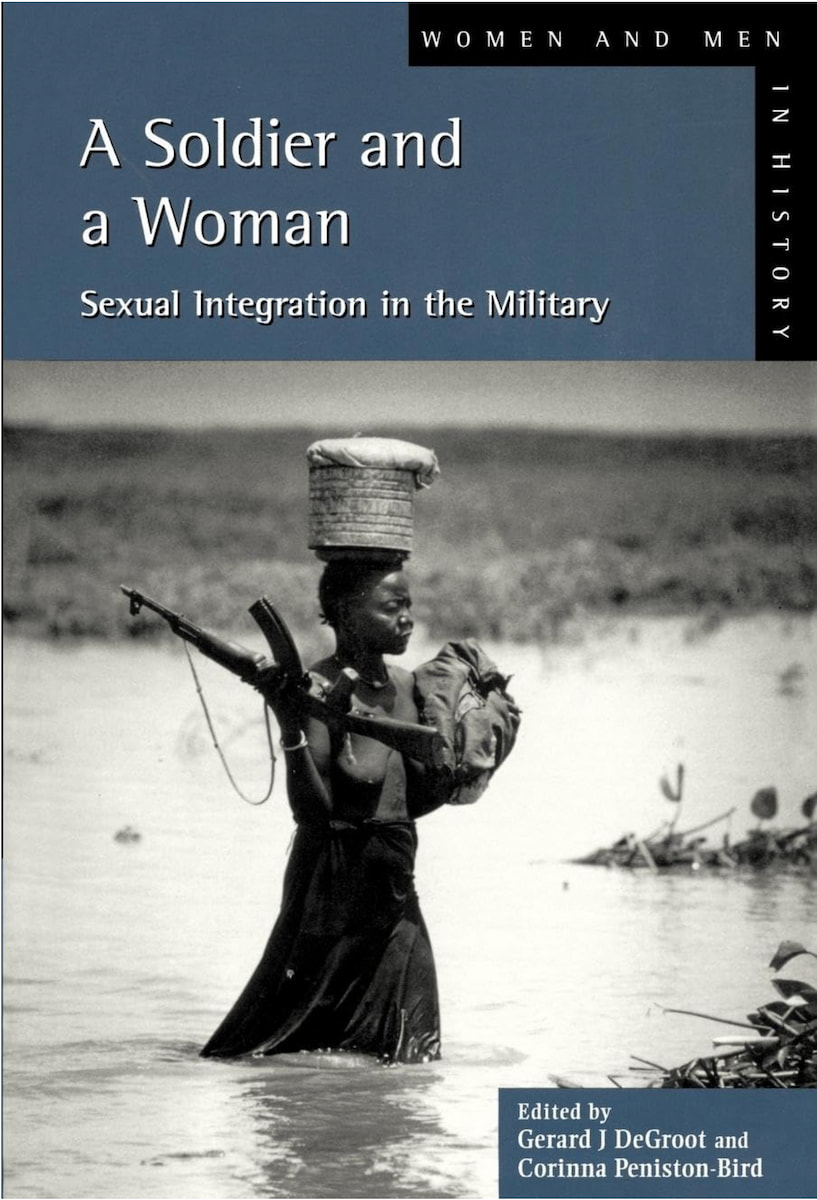
Ed. Gerard J. Degroot and Corinna Peniston-Bird
“‘Do not speak of the services you rendered:’ Women Veterans of Aviation in the Soviet Union,” in
A Soldier and A Woman: Women in the Military
Publisher: Longman
ISBN: 978-0582414389
Publication date: 2000
The image of an armed woman is one rife with tension – it challenges our deep-rooted beliefs regarding the proper role of women in society. The connection between military service and citizenship is explicit to varying degrees in most societies – and therefore the right of women to bear arms is an issue that strikes at the heart of a society’s valuation of women. ‘A Soldier and a Woman’ explores this controversial subject in nineteen essays spanning three centuries and four continents from the late medieval period to the present day. This collection of essays builds a picture of the practical and ideological issues surrounding women soldiers, and the ambiguous place they inhabit; in the process uncovering a remarkable continuity across cultures and periods. The female soldier raises questions of military readiness, gender identity, perceptions of the body, power structures and hierarchy, gendered symbolism and language, personal and collective identities, the power of myths, and the disjunction between equality and conformity.
A wide range of countries is surveyed including Algeria, Britain, China, France, Israel, the United States, the Soviet Union and Vietnam. As well as conventional armed conflict – such as the Thirty Years War, the Anglo-Boer War, the First and Second World Wars, and the Vietnam War – the role of women in guerilla warfare, resistance and terrorism is also examined.
NOTE:
Reina Pennington’s essay was originally published in the Journal of Slavic Military Studies 9, no. 1 (1996).
from Reina Pennington’s essay on “‘Do not speak of the services you rendered:’
“Many in the West have assumed that the Soviets made a “logical” decision to demobilize women based on the single criterion of military performance. The line of reasoning is that if the women had performed well, they would have been retained in service; since they were demobilized, they must have fought badly . . .
“A deeper examination reveals that other factors overrode any consideration of wartime performance in the decision to exclude women from the postwar military. This paper will begin by evaluating the combat performance of Soviet women aviators and describing what happened to these women when the war ended. Next, the influence of several important factors on the government’s decision to demobilize women and the women’s own acquiescence will be discussed; these factors include cultural ideas of gender roles, social policies of pronatalism, and psychological effects of war-weariness. Finally, evidence will be presented that political decisions were made long before the end of the war to bar women from the postwar Soviet military.”
